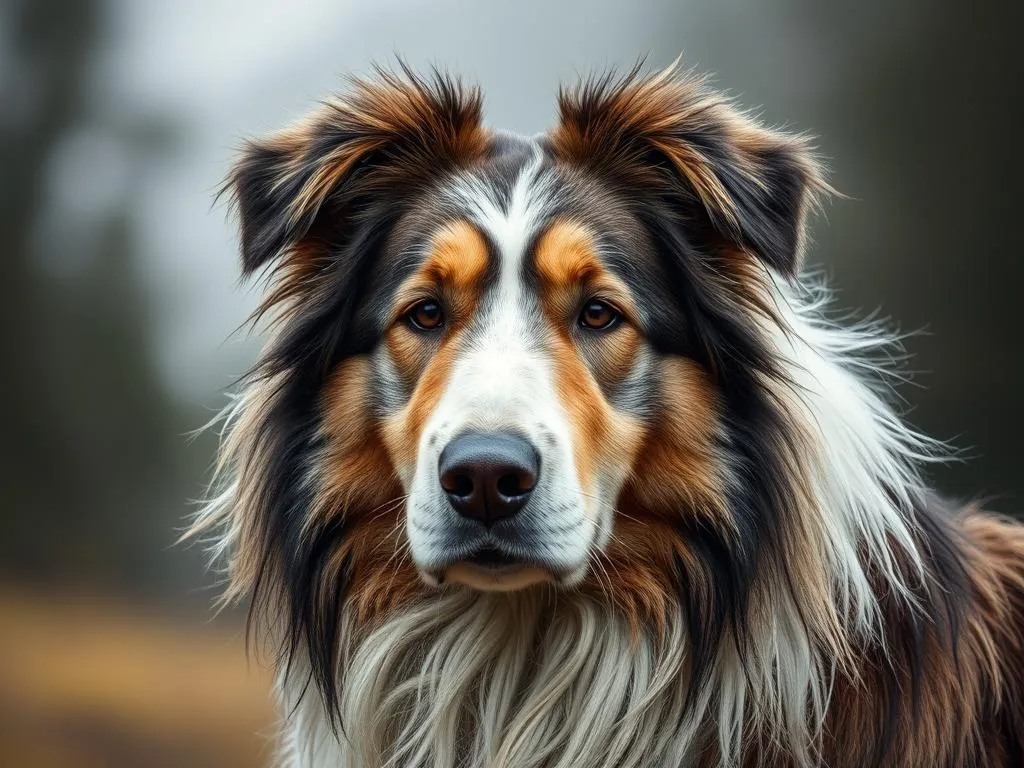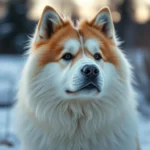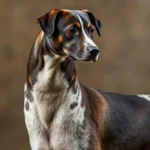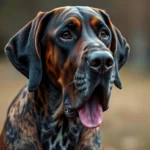
Introduction
Dog breeds are a fascinating aspect of canine companionship, offering a wide variety of characteristics, temperaments, and historical backgrounds. Understanding specific breeds allows potential dog owners to make informed decisions about which breed best suits their lifestyle and needs. Among these breeds, the Carpathian Sheepdog stands out, known for its impressive stature, protective nature, and rich heritage. This article aims to provide an in-depth overview of the Carpathian Sheepdog, exploring its history, physical characteristics, temperament, care requirements, and much more.
History of the Carpathian Sheepdog
The Carpathian Sheepdog, or Ciobănesc Românesc Carpatin, has deep roots in the mountainous regions of Romania and surrounding areas. Its origins can be traced back to the ancient shepherding dogs of the region, believed to be descendants of the Molosser-type dogs that roamed the Carpathian Mountains. These dogs were bred primarily for their ability to protect livestock from predatory animals such as wolves and bears, playing a crucial role in the pastoral lifestyle of the local shepherds.
Historically, the Carpathian Sheepdog was not just a companion but a vital asset to shepherds. They were trained to work alongside humans, guiding and protecting flocks of sheep across rugged terrains. As the breed evolved, they developed a strong instinct for guarding and a deep bond with their human handlers, traits that have persisted through generations.
Geographically, the Carpathian Sheepdog is most prominent in Romania, but its influence stretches into neighboring countries. Its ability to adapt to diverse environments has made it a beloved breed among shepherds and rural families throughout Eastern Europe.
Physical Characteristics
The Carpathian Sheepdog is a large and powerful breed, with males typically weighing between 90 to 110 pounds, while females range from 70 to 90 pounds. Their robust stature and muscular build make them well-suited for the physically demanding tasks of herding and guarding.
Coat Type and Color Variations
One of the most striking features of the Carpathian Sheepdog is its thick double coat, which protects it from harsh weather conditions. The outer coat is long and straight, while the undercoat is dense and soft. Color variations include shades of gray, yellow, and fawn, often with a black mask or markings on the face. This coat not only enhances their beauty but also provides essential insulation against cold climates.
Distinctive Features
Distinctive features of the Carpathian Sheepdog include:
- Ears: Medium-sized, erect, and triangular, often giving them an alert expression.
- Tail: Thick at the base and tapering towards the end, typically carried high when the dog is in action.
- Eyes: Dark and expressive, conveying intelligence and loyalty.
When compared to similar breeds, such as the Maremma Sheepdog or Kangal, the Carpathian Sheepdog boasts a more rugged appearance and a slightly more agile physique, making it adept at navigating mountainous terrains.
Temperament and Behavior
The Carpathian Sheepdog is known for its strong and confident temperament. These dogs are incredibly loyal to their families and protective of their territory. Their natural guarding instincts make them excellent watchdogs, often alerting their owners to any potential threats.
Socialization Needs
Despite their protective nature, Carpathian Sheepdogs require proper socialization from an early age. Introducing them to various people, animals, and environments helps them develop into well-rounded companions. Their interaction with families and children can be affectionate, but supervision is essential, especially in homes with younger children.
Training and Obedience Considerations
Training a Carpathian Sheepdog can be both rewarding and challenging. They are intelligent dogs that respond well to consistent and positive reinforcement methods. However, their independent streak means they may not always be eager to please. Early obedience training is crucial to establishing a strong bond and ensuring that they understand their role within the family structure.
Health and Care Requirements
Like all breeds, the Carpathian Sheepdog is prone to certain health issues. Common concerns include hip dysplasia, elbow dysplasia, and certain skin conditions due to their thick coats. Regular veterinary check-ups are essential for early detection and prevention of potential health problems.
Grooming Needs
The grooming needs of the Carpathian Sheepdog are moderate to high, primarily due to their dense coat. Regular brushing, ideally once or twice a week, helps remove loose hair and prevent matting. During shedding seasons, more frequent grooming may be necessary. Bathing should be done as needed, but over-bathing can strip the coat of its natural oils.
Diet and Nutrition Tips
Feeding a Carpathian Sheepdog a well-balanced diet is vital for maintaining optimal health. High-quality dog food formulated for large breeds is recommended, ensuring it contains appropriate levels of protein, fats, and essential nutrients. Portion control is essential, as this breed can be prone to obesity. Consulting with a veterinarian for personalized dietary recommendations can help ensure your dog remains healthy and active.
Living Environment and Exercise Needs
Carpathian Sheepdogs thrive in environments that allow them to roam and explore. Their ideal living conditions include spacious homes with access to a yard, preferably in rural or semi-rural areas. While they can adapt to different climates, they prefer cooler temperatures due to their thick coats.
Recommended Exercise Routines
Daily exercise is crucial for the Carpathian Sheepdog to maintain physical and mental health. They require at least one to two hours of vigorous activity each day, which can include long walks, runs, and play sessions. Engaging in herding activities or agility training can also provide excellent mental stimulation and physical workout.
Compatibility with Apartments vs. Houses with Yards
While Carpathian Sheepdogs can adapt to apartment living, it is not ideal due to their size and exercise needs. A house with a secure, fenced yard is much more suitable, allowing them to run and play freely. If living in an apartment, owners must commit to regular outdoor exercise and mental engagement to keep the dog happy and healthy.
Training the Carpathian Sheepdog
Training a Carpathian Sheepdog can be a fulfilling experience, but it requires patience and consistency. Basic training techniques should focus on positive reinforcement, rewarding good behavior with treats and praise.
Importance of Early Socialization
Early socialization is critical for this breed. Exposing them to various environments, people, and situations helps reduce potential behavioral issues later on. Puppy classes or socialization groups can be beneficial for building confidence and social skills.
Addressing Behavioral Issues
Common behavioral issues that may arise include excessive barking or aggression if not properly trained and socialized. Addressing these concerns early on with professional guidance or training resources can lead to a more balanced and well-behaved dog.
Success Stories and Tips
Many experienced trainers emphasize the importance of establishing leadership and consistency in training. Success stories often highlight the Carpathian Sheepdog‘s loyalty and intelligence, showcasing how, when properly trained, they can excel in obedience and protective roles.
The Carpathian Sheepdog in Popular Culture
The Carpathian Sheepdog has made its mark in popular culture, often depicted as a loyal protector in movies, books, and folklore. Their impressive size and noble demeanor make them a striking presence.
Representation in Media
While not as widely known as some other breeds, the Carpathian Sheepdog has appeared in various films and documentaries focusing on rural life and herding practices. These representations help to raise awareness about the breed and its unique qualities.
Role in Folklore and Myths
In Romanian folklore, the Carpathian Sheepdog is often portrayed as a guardian spirit of the shepherd, embodying loyalty and bravery. Such stories contribute to the breed’s mystique and deepen its connection to Romanian culture.
Impact on Popularity
As awareness of the Carpathian Sheepdog grows, so does its popularity among dog enthusiasts. Their impressive abilities as working dogs combined with their protective nature make them appealing to those seeking a loyal companion.
Adoption and Breeding Considerations
For those considering adding a Carpathian Sheepdog to their family, it’s essential to find reputable breeders or rescue organizations. Responsible breeding practices are vital for ensuring the health and temperament of the breed.
Questions to Ask Before Adopting or Buying
When looking for a Carpathian Sheepdog, potential owners should ask breeders about health testing, lineage, and socialization practices. Understanding the dog’s background and upbringing can provide insight into their future behavior and health.
Ethical Considerations in Breeding and Ownership
Ethical breeding practices are crucial for the well-being of the breed. Prospective owners should be aware of the importance of adopting from shelters or rescue organizations, as many dogs in need of homes may not have a suitable breeding background.
Costs Associated with Acquiring and Caring
The costs associated with acquiring a Carpathian Sheepdog can vary based on location and breeder reputation. Potential owners should also budget for ongoing expenses such as veterinary care, grooming, food, and training.
Conclusion
The Carpathian Sheepdog offers unique qualities that make it a remarkable breed for those seeking a loyal and protective companion. With a rich history, impressive physical characteristics, and a strong temperament, these dogs require dedicated owners who can provide the training, socialization, and care they need. For anyone considering this breed, understanding its needs and characteristics is the first step toward a fulfilling relationship with a remarkable canine partner.









